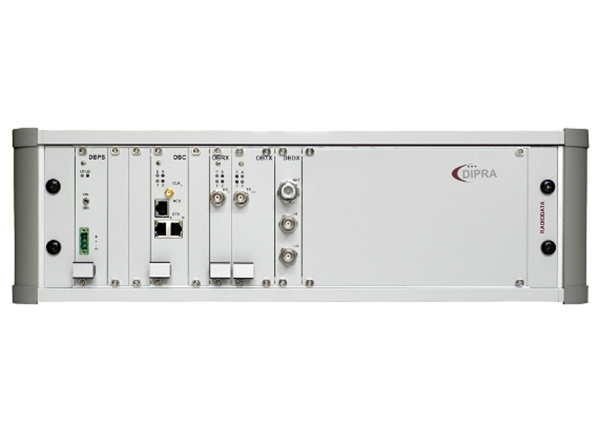 The versatile design of the DIPRA® DMR basestation BS2400 pursues a modern, extensively digital approach to its RF frontends, also known as Software Defined Radio (SDR). The idea of an SDR based platform aims at RF receivers and transmitters which are to be configured by software. In implementing this, a powerful DSP and a Field Programmable Gate Array (FPGA) are both processing the digital base band signal. This approach provides very high potential for functional amendments in the future.
The versatile design of the DIPRA® DMR basestation BS2400 pursues a modern, extensively digital approach to its RF frontends, also known as Software Defined Radio (SDR). The idea of an SDR based platform aims at RF receivers and transmitters which are to be configured by software. In implementing this, a powerful DSP and a Field Programmable Gate Array (FPGA) are both processing the digital base band signal. This approach provides very high potential for functional amendments in the future.
Capacity requirements and limitations of available spectrum determine the BS2400 of choice - either standard or simulcast, which altogether are derived from a basic model which consist of a variety of components.
The DIPRA® Basestation Controller DBC controls the entire basestation, provides a user interface for configuring the basestation and interfaces to link to the DIPRA® switch. In case of link failure the BS2400 enters into fall-back mode operating now as a single-site DMR Tier III radio system with certain limitations.
The received digital data is made available to the DBC by the DIPRA® Basestation Receiver DBRX. An optional second receiver with a separate antenna may improve the up-link path and thereby improving radio coverage in favor of users of handheld radio terminals.
The DIPRA®Basestation Transmitter DBTX modulates the digital data stream onto the carrier frequency of the transmitter and amplifies this signal up to a maximum of 10W. An integrated directional coupler permanently monitors power output and standing wave ratio and reports any violation of limits.
The DIPRA®Basestation Power Supply DBPS accepts a primary voltage between 12VDC and 60VDC.
The DIPRA®Basestation Input-Output DBIO module facilitates simple remote monitoring and control measures. It provides four digital inputs and outputs each, e.g. in order to monitor door switches or alarm messages from a UPS.
The DIPRA®Basestation Clock DBCK is a necessary prerequisite for the BS2400 to operate in simulcast mode.
The DIPRA®Basestation Duplexer DBDX permits to connect one common antenna with the DBRX receiver input and the DBTX transmitter output.
The variants of the DIPRA® DMR basestation BS2400 can fulfill very distinct capacity requirements:
- simulcast basestation, equipped with one-carrier or multiple-carriers for very low and low to medium capacity requirements, respectively,
- standard one-carrier basestation (basic BS2400 model), for low capacity requirements,
- standard multiple-carrier basestation, for medium to high capacity requirements.
Beyond that, the DIPRA® DMR basestation BS2400 is available for all general PMR frequency bands, i.e. low VHF (68 - 88MHz), high VHF (146 - 174MHz) and UHF (410 - 430 and 450 - 470MHz).


